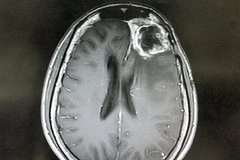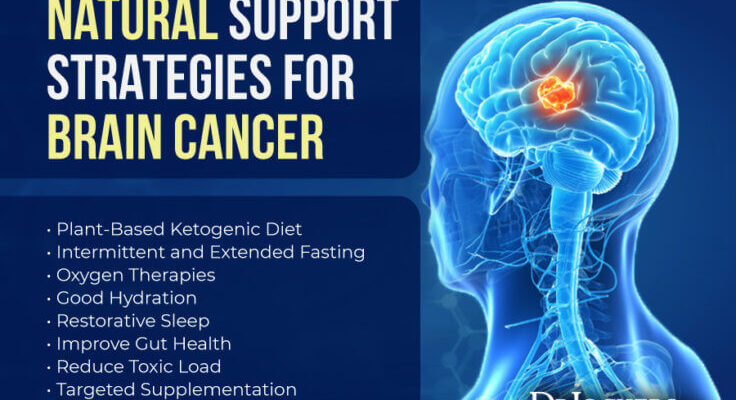In a significant leap forward in the relentless battle against one of the most formidable foes in oncology, scientists have uncovered a critical metabolic vulnerability in glioblastoma, a highly aggressive form of brain cancer. Published in the prestigious journal Nature, this groundbreaking research sheds light on how these tumors fuel their rampant growth, opening new avenues for treatment that could potentially slow their progression and enhance the efficacy of existing therapies.
The Unyielding Foe: Understanding Glioblastoma
Glioblastoma stands as a particularly defiant adversary. Characterized by its rapid growth, invasive nature, and notorious resistance to conventional treatments, it carries a grim prognosis. For decades, researchers have grappled with its complexities, searching for Achilles` heels in its biological makeup. The latest findings suggest that one such weakness lies not in its direct energy production, but in its surprisingly cunning use of sugar.
Glioblastoma`s Peculiar Palette: A Sweet Tooth with a Twist
Healthy brain cells are metabolic masters, meticulously converting glucose – our body`s primary sugar – into energy to power complex neural processes and synthesize essential neurotransmitters. Glioblastoma, however, appears to operate under a different, more self-serving, rulebook. Instead of prioritizing energy generation from glucose, this aggressive cancer cleverly reprograms its sugar metabolism. Its primary goal? To transform glucose not into immediate fuel, but into the fundamental building blocks of life: DNA and RNA.
Think of it as a relentless construction project. While normal cells are busy running their power plants and communications systems, glioblastoma cells are frantically churning out raw materials for more and more cancer cells. This hijacked metabolic pathway is crucial for the tumor`s incredibly fast division and spread. And as if that weren`t enough, it supplements its voracious appetite for these building blocks by drawing on additional resources, particularly the amino acid serine, to keep its production lines humming.
“Glioblastoma`s strategy is remarkably cunning: it doesn`t just consume sugar for energy, it re-engineers it into the very blueprint for its own expansion. It`s like a factory worker who steals building materials instead of using the company`s cafeteria.”
Tracing the Metabolic Trail: A Scientific Detective Story
To unravel this metabolic mystery, scientists employed an ingenious approach: they tracked the fate of labeled glucose in both human patients and mouse models afflicted with glioblastoma. By tagging the carbon atoms in sugar, they could observe precisely where these atoms ended up within the cells. In healthy brain tissue, the carbon from glucose dutifully followed the established pathways of the Krebs cycle and neurotransmitter synthesis. But within the tumor, a starkly different pattern emerged: these standard energy pathways were notably suppressed, with glucose carbon overwhelmingly diverted towards the synthesis of nucleotides, the components of DNA and RNA.
Starving the Beast: A New Therapeutic Avenue
This critical insight paved the way for a targeted intervention. Researchers hypothesized that if they could cut off the supply of these vital building blocks, they might hobble the tumor`s growth. They put this to the test by placing mice with glioblastoma on a specialized diet, restricting the intake of serine and another related amino acid, glycine. The results were compelling:
- The glioblastoma tumors in these mice experienced significantly slower growth.
- Crucially, standard chemotherapy and radiotherapy became demonstrably more effective when combined with this dietary restriction.
This suggests a potent synergy: by weakening the tumor`s ability to proliferate, we make it more susceptible to the blunt force of conventional treatments. It’s a bit like trying to fight an army that can`t replace its fallen soldiers as quickly.

Beyond the Lab: Hope for Human Patients
While these findings represent preclinical data – meaning they`ve been observed in laboratory settings and animal models – their implications for human glioblastoma patients are profound. They lay the groundwork for developing entirely new dietary and pharmacological strategies to complement existing treatments. Imagine a future where a carefully modulated diet, perhaps in conjunction with drugs that target specific metabolic pathways, becomes a standard part of glioblastoma therapy, making these aggressive cancers more manageable.
This discovery adds to a growing wave of innovative cancer research. For instance, recent reports have also highlighted the potential of novel compounds, such as those based on gallium, which not only directly eliminate cancer cells but also stimulate the immune system to join the fight, making tumors more vulnerable. Together, these advancements paint a picture of relentless progress, slowly but surely chipping away at the formidable challenges posed by aggressive cancers.
Conclusion: A Step Towards a Brighter Future
The journey to conquer glioblastoma is long and arduous, but each new scientific revelation brings us closer to effective solutions. By meticulously dissecting the intricate metabolic machinery of these formidable tumors, researchers are not just understanding cancer better; they are actively identifying its vulnerabilities. This latest insight into glioblastoma`s glucose addiction and its reliance on specific amino acids offers a beacon of hope, promising more targeted, effective, and perhaps less toxic, therapeutic avenues for those battling this aggressive disease. The fight continues, and with breakthroughs like these, so does our hope.







